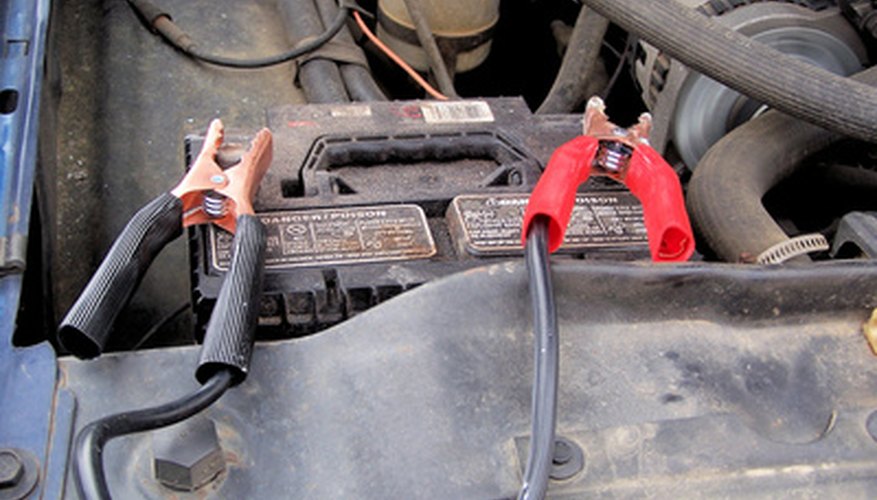While most car electrical systems are 12 volt, many diesel engines, larger trucks and buses, and most military vehicles use 24 volts to deliver the extra power necessary for diesel glow plugs. Some 24-volt systems use 24-volt batteries, while others wire two 12-volt batteries in series. In either case, if a vehicle with a 24-volt battery needs a jump start, it can be a headache. Since the power of a 24-volt system will overload a 12-volt one in another vehicle, you will need another 24-volt battery to provide the power.
- While most car electrical systems are 12 volt, many diesel engines, larger trucks and buses, and most military vehicles use 24 volts to deliver the extra power necessary for diesel glow plugs.
- Since the power of a 24-volt system will overload a 12-volt one in another vehicle, you will need another 24-volt battery to provide the power.
Find someone with a 24-volt system in their car or truck to come help you. Their electrical system can safely be connected to yours with jump leads without risking an overload as your vehicle starts.
Move the second vehicle's hood as close as possible to yours, and pop both bonnets open.
Look under both bonnets to locate the batteries. They are large, rectangular plastic boxes with two large electrical contacts on them.
Clip the red (positive) jump lead onto the positive ("+") terminal of the battery of the good car, and clip the other end onto the positive terminal of the dead car's battery. If the cars have two batteries, they will be wired in sequence, so it doesn't matter which terminal you attach it to; the good battery will power up the whole circuit.
Clip one end of the black (negative) cable to the negative ("-") contact of the good car's battery and the other end to an unpainted (and ideally shiny) piece of metal on the frame of the dead car. Exposed bolts in the engine compartment work well. Don't clip it to the dead battery itself, as this risks a battery explosion. You may see a spark when you make the final connection; this is normal.
- Look under both bonnets to locate the batteries.
- Clip one end of the black (negative) cable to the negative ("-") contact of the good car's battery and the other end to an unpainted (and ideally shiny) piece of metal on the frame of the dead car.
Put the key into the good car's ignition, and start it. Step on the gas with the car in neutral to rev the engine, and provide extra power to the alternator; this will keep electricity flowing into the battery as it charges the dead battery in the other car.
Shut down the good car's engine, and try to start the dead car. This avoids the risk of damage to the first car's electrical systems from the surge in the circuit as the first car starts up, but might not always work. If it doesn't, try starting the dead car with the good car's engine running.
Check for problems if the dead car still doesn't start. All the electrical systems in it (lights, heating, A/C) need to be off, and the terminals of the battery should be clean. If, after wiping the terminals and turning everything off, the car still doesn't start, then it is likely a problem with your starter or alternator, and you will need a tow.
- Put the key into the good car's ignition, and start it.
- If, after wiping the terminals and turning everything off, the car still doesn't start, then it is likely a problem with your starter or alternator, and you will need a tow.
Remove the jump leads in the reverse order that you put them on.
Buy a 24-volt battery pack from an automotive store, and plug it in to charge it.
Pop the bonnet of your vehicle, and connect the red and black cables in the same way as you would with another vehicle; red to the positive ("+") terminal on the battery and black to an exposed piece of the vehicle's frame.
Turn the battery pack on and try to start your vehicle. If it doesn't start, the troubleshooting process is the same -- check that electrical systems are off and the terminals are clean before calling a tow truck.
